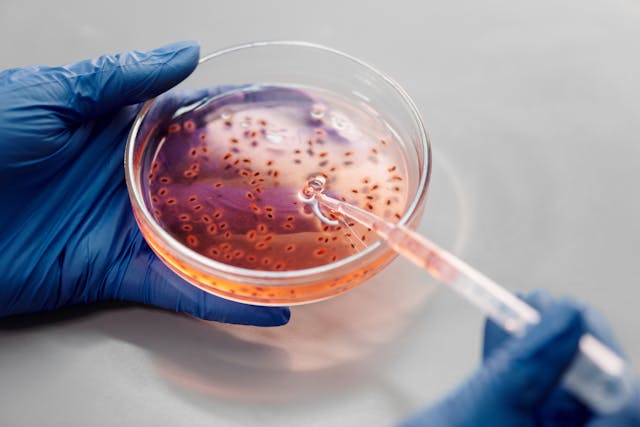
What is sepsis? Sepsis is when the body’s immune system responds to an infection, and by doing so, causes potentially life-threatening damage to the organs.
A lot of information about what sepsis does comes from the name of the disease. The word “sepsis” comes from the Greek word “sepsis”, which means putrefaction, which in turn comes from “sepein”, which means to rot. The word sepsis, in regards to what happens in the body, has been used for over 2,500 years. It comes from the Greek word because it was first used by the Greeks. The word was first used by Hippocrates (he of the oath) in the 4th century BC, and it was used by Aristotle, Plutarch, and Homer after that. However, the actual cause of sepsis wasn’t understood until the 19th century.
The problem that becomes sepsis comes about because of the way the immune system works. Your immune system is there to protect you from things like bacteria and microbes that get inside you somehow. We obviously already have trillions of bacteria inside us, but not all bacteria are good bacteria. If invading bacteria and viruses are allowed to go, they will multiply until there are so many that our normal bodily functions can’t work. To stop them, we have our immune system. Our blood has white blood cells that are produced in the bone marrow. They move through the blood looking for anything that shouldn’t be there. The white blood cells can recognize which organisms are native to our bodies and which are foreign by checking for antigens. All cells produce something called antigens. These are often proteins, but they can be sugars or other molecules. The white blood cells can sample these antigens and they will know if it is friendly organism, or an unfriendly one. When they sample an unfriendly antigen, they begin producing antibodies, which mark the invading organism so it can be destroyed. White blood cells remember what antigens they have sampled before, which can make their response much faster. This is how vaccines work.
When the white blood cells have marked the invading organisms, they do several things. One of those things is to release chemicals that trigger inflammation. One of these chemicals is called histamine, and it is the chemical that causes allergic reactions. The chemicals make the blood vessels widen, which means more fluid and more white blood cells can move along them. The vessels also become more permeable so the white blood cell filled fluid can leak into the surrounding tissue. This makes the area swell up and become red. Once the white blood cells have dealt with the organism, it is removed with the fluid and flushed out of the body. The blood vessels return to normal, and the swelling goes down.
This system is what causes the problems in sepsis. Usually, the immune system is able to keep the infection in one place and deal with it. However, if the immune system isn’t strong enough to deal with the pathogen, or the pathogen is stronger than the immune system, it can spread. When this happens, the white blood cells go after the infection, triggering inflammation wherever they find it. We are ok with some inflammation, but more of it can cause leaky blood vessels as all the fluid goes into the tissue. There can be blood clots as well. The blood volume in the blood vessels goes down, and the blood pressure drops. The heart has to work harder to keep pumping blood, and organs start to become deprived of oxygen and nutrients. If it continues untreated, organs will shut down, and it is fatal. Before the discovery of antibiotics, sepsis was almost always fatal. These days, patients receive a bundle of antibiotics to kill the pathogen and intravenous fluid to keep the blood volume up. If caught in time, sepsis can be treated. The longer it is left, the more dangerous it becomes.
There are three levels of sepsis. The first is just sepsis. It is the first stage where your immune system has begun to overreact. The second stage is severe sepsis, and it is where the organs have started to malfunction. The last stage is septic shock. At this stage, the blood pressure is very low and doesn’t go up, no matter how much fluid is injected intravenously. The inflammation gets worse, and all the fluid leaks out of the blood into the tissue. Even the septic shock stage can be treated. About 60% of people with septic shock survive, so long as they are in the hospital. There are medicines that can make the blood vessels dilate, but if any organs have failed, recovery is tricky. And this is what I learned today.
Sources
https://www.betterhealth.vic.gov.au/health/conditionsandtreatments/immune-system
https://www.nhsinform.scot/illnesses-and-conditions/blood-and-lymph/sepsis
https://www.mayoclinic.org/diseases-conditions/sepsis/symptoms-causes/syc-20351214
https://en.wikipedia.org/wiki/Sepsis
https://www.etymonline.com/word/sepsis
https://pmc.ncbi.nlm.nih.gov/articles/PMC9686931
https://my.clevelandclinic.org/health/diseases/23255-septic-shock
https://www.nigms.nih.gov/education/fact-sheets/Pages/sepsis
Photo by Edward Jenner: https://www.pexels.com/photo/person-using-a-pipette-4031442/
